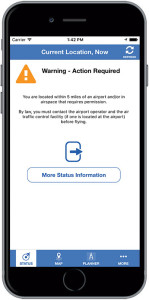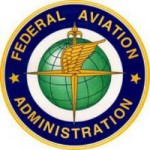The Federal Aviation Administration (FAA) has released an updated list of pilot, air traffic controller, law enforcement and citizen reports of potential encounters with unmanned aircraft systems (UAS) – more popularly called “drones”. The latest data cover February through September 2016.
Reports of possible drone sightings to FAA air traffic facilities continued to increase during FY 2016. There were 1,274 such reports from February through September last year, compared with 874 for the same period in 2015.
 Although the data contain several reports of pilots claiming drone strikes on their aircraft, to date the FAA has not verified any collision between a civil aircraft and a civil drone. Every investigation has found the reported collisions were either birds, impact with other items such as wires and posts, or structural failure not related to colliding with an unmanned aircraft.
Although the data contain several reports of pilots claiming drone strikes on their aircraft, to date the FAA has not verified any collision between a civil aircraft and a civil drone. Every investigation has found the reported collisions were either birds, impact with other items such as wires and posts, or structural failure not related to colliding with an unmanned aircraft.
Safely integrating unmanned aircraft into the national airspace system is one of the FAA’s top priorities, and the agency wants to send a clear message that operating drones around airplanes and helicopters is dangerous and illegal. Unauthorized operators may be subject to stiff fines and criminal charges, including possible jail time.
The FAA wants operators to know where it’s legal to fly their drones. For current information on where unmanned aircraft can be flown safely, the FAA offers the B4UFLY app which is available for iOS and Android smartphones. The app is free and can be downloaded from iTunes and Google Play.
Source: Press Release


Several notable points in that article. The increase in “sightings” is about 46%. Not bad when the number of ‘Drones’ sold in the subsequent year was almost a 200% increase. So in fact the sightings of drones by manned aircraft has not grown at the same rate as the sales of ‘Drones’ in the same period.
The other major point is that ALL so called ‘strikes’ have been dismissed as something else. The FAA has yet to substantiate any significant strike.
Much of the media reporting has been based on sensation, not fact. In Canada there was a widely reported incident where a pilot approaching an airport had to ‘avoid’ a UAS. In fact the passenger aircraft was 55 kilometers away from the airport at about 3200 metres or about 10,000 feet. The claim was the UAV was crossing the path of the passenger aircraft and the passenger aircraft had to take measures to avoid the ‘drone’.
As it was a twin engine turbo prop aircraft, it is highly unlikely a ‘drone’ would have been traveling at a speed to cross the path of the aircraft. And for a drone to maintain that kind of speed at 10,000 feet is even less probable.
The media reported it as being near an airport and implied it was during approach to the runway. It now appears the reader must verify the details themselves, when reading or hearing of these incidents. In reality most of them appear to be the commercial passenger operators trying to drum up support for wide scale bans of ‘drone’ aircraft, through sensational reporting.
I agree with Jim, and if said DRONE was doing 200+ knots, it is VERY likely it was a military drone, which of course is a whole different kettle of fish entirely. The Army DID loose a Shadow RQ-7Bv2 a while back, maybe that was the same bird? It was found 600+ miles from where it was supposed to be, several weeks later. If it was at 10K and visible long enough to take evasive maneuvers or even change course or altitude, it was likely not a hobby drone.
The line between “sighting” and encounter or Incident is being in my opinion deliberately blurred by the media and the FAA to continue pressure to regulate sUAS. Before the dreaded drone took to the sky, birds, children’s Mylar balloons and a host of other unidentifiable objects filled the air. Now if it is flying it must be a drone. With THOUSANDS of bird strikes REPORTED every year in the US alone, how many of those have resulted in catastrophic failure of airframe and loss of control? (correct me if I am wrong but I think NONE, don’t go there, Sully was most definitely in control…)
again, correct me if I am wrong, but something the size of a phantom, at 200kts is going to be identifiably visible for not much more than the time it takes you to blink. I seriously doubt most pilots would be able to positively identify a drone from a duck in that amount of time, even if their head WAS outside the cockpit, which these days with glass cockpits ruining night vision and virtually hypnotizing flight crews with a myriad of information, seems to be less and less the case.
YES we need to fly our sUAS safely, and maintain safe distances and intervals from manned aircraft, other hazards and be good neighbors, but we also need to defend ourselves and get the demon stigma off our backs. My friends just spent several days on a VOLUNTEER search and rescue mission. They wouldn’t take a penny for their time or efforts, paid for their own food and lodging and logged countless hours for the family. Nowhere in the media do I see their stories.
It is OUR JOB to blow our own horn, Sing our OWN praises and extoll the virtues of this technology and this industry. If we don’t we run the risk of being shut out completely while all the “enterprise level” users continue to claim the sky as their own personal profit center.
Every time you hear of an unsubstantiated incident, or hear of one that is proven false, keep it as ammo for your battle, for sure as god made little green apples you are going to have to fight for your right to fly.